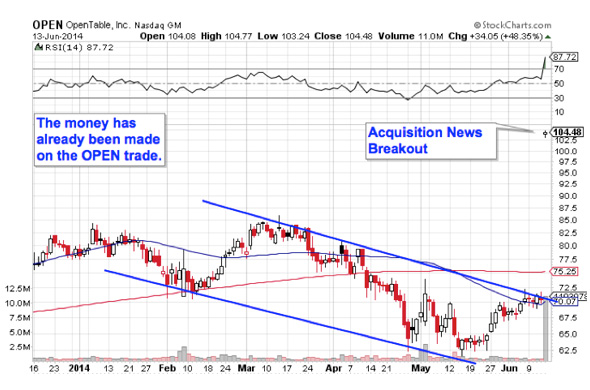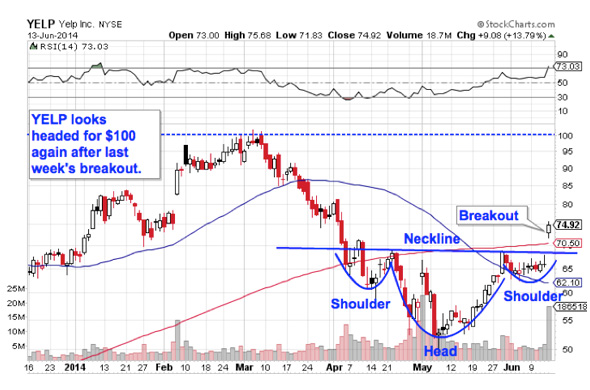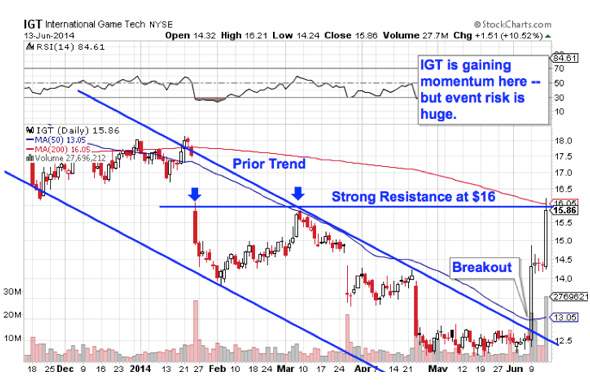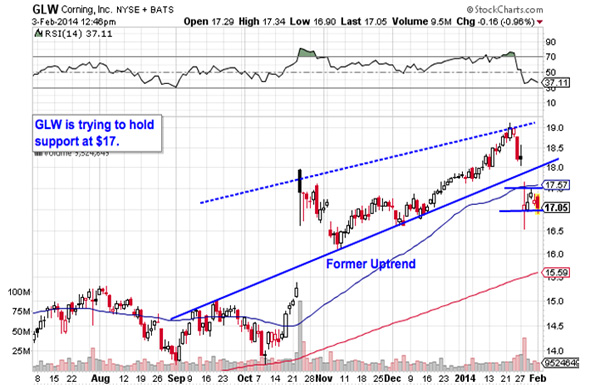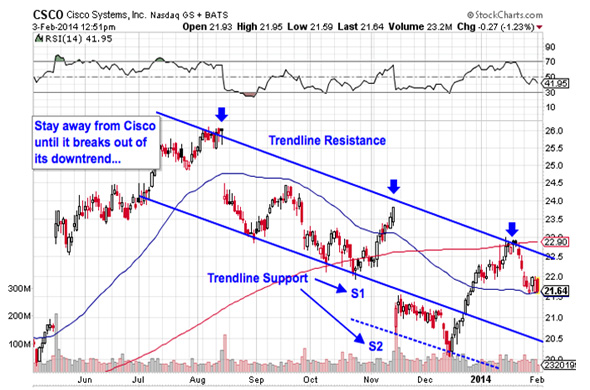There have been a lot of rumors and a lot of alleged leaks about a higher-end Samsung (SSNLF) Galaxy S5 hitting the market soon. This version, dubbed the Galaxy S5 Prime, is said to sport 3GB of RAM (up from 2GB in the current S5) and a quad-HD (2560x1440) display, up from 1920x1080 on the pain S5. It is also said to sport either a next-generation Exynos processor coupled with an Intel XMM 7260 modem ora Qualcomm (QCOM) Snapdragon 805 paired presumably with the latest MDM9x35 modem from Qualcomm.
What are the odds that this model even exists? We very recently saw news of the LG G3's 2560x1440 display hit the Web over the last week or so, and given that LG is probably going to play up this feature, Samsung is also likely to want to be able to keep up in the smartphone "resolution wars." Interestingly enough, though, the LG G3 will apparently sport a 5.5-inch 2560x1440 panel. If the rumors around Samsung's phone are correct, the S5 Prime should offer even higher pixel density at the same resolution on a 5.1-inch display.
That being said, such a phone is likely to be extremely expensive to make. Samsung already launched the Galaxy S5 (which had a larger screen than the S4, faster/likely more expensive processor, and other enhanced goodies) for about $100 less than the Galaxy S4 debuted at. This means if the company wants to preserve its margins here, it will either need to sell the purported S5 Prime for significantly more than the current S5, or the S5 Prime won't really sport these BoM-cost-ballooning features.
Should Apple worry? The big question then is whether Apple (AAPL) -- which has been on an absolute roll with its iPhone products lately -- has anything to be worried about vis-a-vis an even higher end, premium-tier Galaxy S5. While Samsung would handily win the "spec wars" with three times the RAM and a much sharper display, it's important to note that Apple's key differentiation point isn't necessarily the hardware, but the harmony of the hardware and the software.
For customers who prefer the ease of use of iOS, there is simply no alternative to Apple, and mainstream customers who are "used to" iOS have a rich library of iOS apps and are also probably hooked into iTunes won't switch to a Samsung/Android phone. It is this differentiation via software (which is R&D intensive but very COGS-friendly) that helps Apple not only maintain its share of the high end, but also allows it to do so with fantasticprofitability.
Conclusion Samsung, LG, and the hordes of Android vendors can bring in the flashiest displays and biggest "on-paper" specifications, but for many users, iOS and the ecosystem that surround it are what make Apple's phones worth the premium, not necessarily the hardware. Any company can buy an obscenely expensive, high-resolution panel and put a ton of RAM in its phones, but not any company can build the ecosystem, the brand, and the customer loyalty that Apple has.
| Currently 0.00/512345 Rating: 0.0/5 (0 votes) | |

Subscribe via Email

Subscribe RSS Comments Please leave your comment:
More GuruFocus Links
| Latest Guru Picks | Value Strategies |
| Warren Buffett Portfolio | Ben Graham Net-Net |
| Real Time Picks | Buffett-Munger Screener |
| Aggregated Portfolio | Undervalued Predictable |
| ETFs, Options | Low P/S Companies |
| Insider Trends | 10-Year Financials |
| 52-Week Lows | Interactive Charts |
| Model Portfolios | DCF Calculator |
RSS Feed  | Monthly Newsletters |
| The All-In-One Screener | Portfolio Tracking Tool |

MORE GURUFOCUS LINKS
| Latest Guru Picks | Value Strategies |
| Warren Buffett Portfolio | Ben Graham Net-Net |
| Real Time Picks | Buffett-Munger Screener |
| Aggregated Portfolio | Undervalued Predictable |
| ETFs, Options | Low P/S Companies |
| Insider Trends | 10-Year Financials |
| 52-Week Lows | Interactive Charts |
| Model Portfolios | DCF Calculator |
RSS Feed  | Monthly Newsletters |
| The All-In-One Screener | Portfolio Tracking Tool |
AAPL STOCK PRICE CHART

90.91 (1y: +58%) $(function(){var seriesOptions=[],yAxisOptions=[],name='AAPL',display='';Highcharts.setOptions({global:{useUTC:true}});var d=new Date();$current_day=d.getDay();if($current_day==5||$current_day==0||$current_day==6){day=4;}else{day=7;} seriesOptions[0]={id:name,animation:false,color:'#4572A7',lineWidth:1,name:name.toUpperCase()+' stock price',threshold:null,data:[[1372050000000,57.506],[1372136400000,57.519],[1372222800000,56.867],[1372309200000,56.254],[1372395600000,56.647],[1372654800000,58.46],[1372741200000,59.784],[1372827600000,60.114],[1373000400000,59.631],[1373259600000,59.293],[1373346000000,60.336],[1373432400000,60.104],[1373518800000,61.041],[1373605200000,60.93],[1373864400000,61.063],[1373950800000,61.456],[1374037200000,61.473],[1374123600000,61.68],[1374210000000,60.707],[1374469200000,60.901],[1374555600000,59.856],[1374642000000,62.93],[1374728400000,62.643],[1374814800000,62.999],[1375074000000,63.97],[1375160400000,64.76],[1375246800000,64.647],[1375333200000,65.239],[1375419600000,66.077],[1375678800000,67.064],[1375765200000,66.464],[1375851600000,66.426],[1375938000000,65.859],[1376024400000,64.921],[1376283600000,66.766],[1376370000000,69.939],[1376456400000,71.214],[1376542800000,71.13],[1376629200000,71.761],[1376888400000,72.534],[1376974800000,71.581],[1377061200000,71.766],[1377147600000,71.851],[1377234000000,71.574],[1377493200000,71.853],[1377579600000,69.799],[1377666000000,70.128],[1377752400000,70.243],[1377838800000,69.602],[1378184400000,69.797],[1378270800000,71.242],[1378357200000,70.753],[1378443600000,71.174],[1378702800000,72.31],[1378789200000,70.663],[1378875600000,66.816],[1378962000000,67.527],[1379048400000,66.414],[1379307600000,64.303],[1379394000000,65.046],[1379480400000,66.383],[1379566800000,67.471],[1379653200000,66.773],[1379912400000,70.091],[1379998800000,69.871],[1380085200000,68.79],[1380171600000,69.46],[1380258000000,68.964],[1380517200000,68.107],[1380603600000,69.709],[1380690000000,69.937],[1380776400000,69.059],[1380862800000,69.004],[1381122000000,69.679],[1381208400000,68.706],[1381294800000,69.513],[1381381200000,69.948],[1381467600000,70.402],[1381726800000,70.863],[1381813200000,71.24],[1381899600000,71.588],[1381986000000,72.071],[1382072400000,72.699],[1382331600! 000,74.48],[1382418000000,74.267],[1382504400000,74.994],[1382590800000,75.987],[1382677200000,75.137],[1382936400000,75.697],[1383022800000,73.811],[1383109200000,74.985],[1383195600000,74.672],[1383282000000,74.29],[1383544800000,75.25],[1383631200000,75.064],[1383717600000,74.417],[1383804000000,73.213],[1383890400000,74.366],[1384149600000,74.15],[1384236000000,74.287],[1384322400000,74.376],[1384408800000,75.451],[1384495200000,74.999],[1384754400000,74.09],[1384840800000,74.221],[1384927200000,73.571],[1385013600000,74.448],[1385100000000,74.257],[1385359200000,74.82],[1385445600000,76.2],[1385532000000,77.994],[1385704800000,79.439],[1385964000000,78.747],[1386050400000,80.903],[1386136800000,80.714],[1386223200000,81.129],[1386309600000,80.003],[1386568800000,80.919],[1386655200000,80.793],[1386741600000,80.194],[1386828000000,80.077],[1386914400000,79.204],[1387173600000,79.643],[1387260000000,79.284],[1387346400000,78.681],[1387432800000,77.78],[1387519200000,78.431],[1387778400000,81.441],[1387864800000,81.096],[1388037600000,80.557],[1388124000000,80.013],[1388383200000,79.217],[1388469600000,80.146],[1388642400000,79.019],[13887

 Popular Posts: Hottest Energy Stocks Now – TPLM HK KOG SD10 Oil and Gas Stocks to Buy Now10 Best “Strong Buy” Stocks — BITA SHPG TRGP and more Recent Posts: Biggest Movers in Technology Stocks Now – TTEC SATS MR PLT Biggest Movers in Services Stocks Now – AMX SSP HHC PAG Hottest Financial Stocks Now – TFSL KCG FSC BLX View All Posts 6 Internet and Web Service Stocks to Buy Now
Popular Posts: Hottest Energy Stocks Now – TPLM HK KOG SD10 Oil and Gas Stocks to Buy Now10 Best “Strong Buy” Stocks — BITA SHPG TRGP and more Recent Posts: Biggest Movers in Technology Stocks Now – TTEC SATS MR PLT Biggest Movers in Services Stocks Now – AMX SSP HHC PAG Hottest Financial Stocks Now – TFSL KCG FSC BLX View All Posts 6 Internet and Web Service Stocks to Buy Now  Why we fired American Apparel CEO NEW YORK (CNNMoney) American Apparel is bolstering its defenses following moves by ousted chairman Dov Charney to take over the company.
Why we fired American Apparel CEO NEW YORK (CNNMoney) American Apparel is bolstering its defenses following moves by ousted chairman Dov Charney to take over the company. 

 Alamy Tax season is a time of stress for many, but it can be a joyful time for the roughly 75 percent of Americans who receive income tax refunds. While the refund really means you're getting back money you loaned to the government at no interest, in practical terms it often means an unexpected infusion of cash into your wallet or bank account. Last year's average income tax refund was $2,755, according to the Internal Revenue Service. That's a nice chunk of change. It's a great problem to have: What do you do with your windfall? The best choice for one person may not be the best choice for another. But experts agree on one thing: If you have debt, apply your refund to paying it off, whether it's credit card debt, student loan debt or other consumer debt. "People should still be focusing first on paying down debt," says Meisa Bonelli, a Wall Street finance and tax professional whose Millennial Tax company advises entrepreneurs on business and tax strategy. Debt, particularly student loan debt, should be a primary target because it limits financial options, preventing people from doing what they want with their money, whether it's buying a house, buying a car or taking a vacation. "Get that debt gone," she says. "It holds you back from everything else you want to do in life." Eric Rosenberg, a financial analyst who writes the blog Narrow Bridge Finance, agrees. "The No. 1 thing anyone should do with a tax refund is pay down debt," he says. After he left graduate school with $40,000 in student loan debt, he focused on aggressively paying it off. Using all his tax refunds and bonuses, he made the final payment just two years and six days after his graduation. With his student loan debt cleared away, he began saving his tax refunds, with the goal of buying a home. He didn't apply any of his refund money to splurges -- instead, he saved for fun and vacation with his regular income. The refunds were earmarked for bigger things. "I treated it like it was extra money that I didn't need to live on," Rosenberg says. "I always encourage people to think long term, not short term." Others believe that giving yourself license to splurge with part of your refund helps you save the rest. Stephanie Halligan, a financial consultant and blogger, signs a contract with herself before she does her taxes, allocating 50 percent of her refund to student loans and 25 percent to long-term savings. She can spend the remaining 25 percent on whatever she wants. "It's easy to react on impulse and emotion when your refund hits, so prepare now for what you'll do with that moolah later," she advises on her personal finance website, The Empowered Dollar. If you're getting a big refund -- a check in the ballpark of $1,000 or more for taxpayers who don't have a side business -- consider adjusting your withholding so that you'll have that money available to you during the year. But those who don't have substantial savings want to avoid a scenario in which they owe four figures to the IRS at tax time. "I think people should withhold the maximum they can withhold," Bonelli says. Rosenberg concurs. As his businesses, running Narrow Bridge Finance and building websites, have grown, his refunds have shrunk. Last year he had to pay the IRS. Here are the seven smartest things you can do with your refund: Pay down debt. If you have any consumer debt -- student loans, credit card balances or installment loans -- pay those off before using your refund for any other purpose. Car payments and home mortgages aren't in this category, but you can consider paying extra principal. Add to your savings. "You can never save enough," Bonelli says. You can use the money to build up your emergency fund, your kids' college funds or put it toward a specific goal, such as buying a house or a car or financing a big vacation. Add to your retirement accounts. If you put $2,500 from this year's tax refund into an IRA, it would grow to $8,500 in 25 years, even at a modest 5 percent rate of return, TurboTax calculates. If you saved $2,500 every year for 25 years, you'd end up with more than $130,000 at that same 5 percent rate of return. Invest in yourself. This could mean taking a class in investing, studying something that interests you or even taking a big trip. "Do something that enriches yourself or adds value to your life," Bonelli says. She is planning to take a class in art therapy this year using money from her refund. Improve your home. Consider putting your refund to good use by adding insulation, replacing old windows and doors or other improvements that would save energy, and therefore money. Or perhaps it's time to remodel your bathroom or kitchen. You're adding value to your home at the same time you're improving your living experience. Apply your refund toward next year's taxes. This is common among self-employed taxpayers, who are required to pay quarterly taxes since they don't have taxes withheld. By applying any overpayment toward upcoming tax payments, you can free up other cash.
Alamy Tax season is a time of stress for many, but it can be a joyful time for the roughly 75 percent of Americans who receive income tax refunds. While the refund really means you're getting back money you loaned to the government at no interest, in practical terms it often means an unexpected infusion of cash into your wallet or bank account. Last year's average income tax refund was $2,755, according to the Internal Revenue Service. That's a nice chunk of change. It's a great problem to have: What do you do with your windfall? The best choice for one person may not be the best choice for another. But experts agree on one thing: If you have debt, apply your refund to paying it off, whether it's credit card debt, student loan debt or other consumer debt. "People should still be focusing first on paying down debt," says Meisa Bonelli, a Wall Street finance and tax professional whose Millennial Tax company advises entrepreneurs on business and tax strategy. Debt, particularly student loan debt, should be a primary target because it limits financial options, preventing people from doing what they want with their money, whether it's buying a house, buying a car or taking a vacation. "Get that debt gone," she says. "It holds you back from everything else you want to do in life." Eric Rosenberg, a financial analyst who writes the blog Narrow Bridge Finance, agrees. "The No. 1 thing anyone should do with a tax refund is pay down debt," he says. After he left graduate school with $40,000 in student loan debt, he focused on aggressively paying it off. Using all his tax refunds and bonuses, he made the final payment just two years and six days after his graduation. With his student loan debt cleared away, he began saving his tax refunds, with the goal of buying a home. He didn't apply any of his refund money to splurges -- instead, he saved for fun and vacation with his regular income. The refunds were earmarked for bigger things. "I treated it like it was extra money that I didn't need to live on," Rosenberg says. "I always encourage people to think long term, not short term." Others believe that giving yourself license to splurge with part of your refund helps you save the rest. Stephanie Halligan, a financial consultant and blogger, signs a contract with herself before she does her taxes, allocating 50 percent of her refund to student loans and 25 percent to long-term savings. She can spend the remaining 25 percent on whatever she wants. "It's easy to react on impulse and emotion when your refund hits, so prepare now for what you'll do with that moolah later," she advises on her personal finance website, The Empowered Dollar. If you're getting a big refund -- a check in the ballpark of $1,000 or more for taxpayers who don't have a side business -- consider adjusting your withholding so that you'll have that money available to you during the year. But those who don't have substantial savings want to avoid a scenario in which they owe four figures to the IRS at tax time. "I think people should withhold the maximum they can withhold," Bonelli says. Rosenberg concurs. As his businesses, running Narrow Bridge Finance and building websites, have grown, his refunds have shrunk. Last year he had to pay the IRS. Here are the seven smartest things you can do with your refund: Pay down debt. If you have any consumer debt -- student loans, credit card balances or installment loans -- pay those off before using your refund for any other purpose. Car payments and home mortgages aren't in this category, but you can consider paying extra principal. Add to your savings. "You can never save enough," Bonelli says. You can use the money to build up your emergency fund, your kids' college funds or put it toward a specific goal, such as buying a house or a car or financing a big vacation. Add to your retirement accounts. If you put $2,500 from this year's tax refund into an IRA, it would grow to $8,500 in 25 years, even at a modest 5 percent rate of return, TurboTax calculates. If you saved $2,500 every year for 25 years, you'd end up with more than $130,000 at that same 5 percent rate of return. Invest in yourself. This could mean taking a class in investing, studying something that interests you or even taking a big trip. "Do something that enriches yourself or adds value to your life," Bonelli says. She is planning to take a class in art therapy this year using money from her refund. Improve your home. Consider putting your refund to good use by adding insulation, replacing old windows and doors or other improvements that would save energy, and therefore money. Or perhaps it's time to remodel your bathroom or kitchen. You're adding value to your home at the same time you're improving your living experience. Apply your refund toward next year's taxes. This is common among self-employed taxpayers, who are required to pay quarterly taxes since they don't have taxes withheld. By applying any overpayment toward upcoming tax payments, you can free up other cash.

 Popular Posts: Facebook Stock a Strong Buy Despite Oculus Concerns3 Chinese Stocks Set to Gain On China’s Economic ReboundWalt Disney Stock is Still Magic For Investors Recent Posts: 3 Top-Rated Stocks to Buy on Any Dips Facebook Stock a Strong Buy Despite Oculus Concerns 3 Chinese Stocks Set to Gain On China’s Economic Rebound View All Posts
Popular Posts: Facebook Stock a Strong Buy Despite Oculus Concerns3 Chinese Stocks Set to Gain On China’s Economic ReboundWalt Disney Stock is Still Magic For Investors Recent Posts: 3 Top-Rated Stocks to Buy on Any Dips Facebook Stock a Strong Buy Despite Oculus Concerns 3 Chinese Stocks Set to Gain On China’s Economic Rebound View All Posts 
 MORE GURUFOCUS LINKS
MORE GURUFOCUS LINKS  90.91 (1y: +58%) $(function(){var seriesOptions=[],yAxisOptions=[],name='AAPL',display='';Highcharts.setOptions({global:{useUTC:true}});var d=new Date();$current_day=d.getDay();if($current_day==5||$current_day==0||$current_day==6){day=4;}else{day=7;} seriesOptions[0]={id:name,animation:false,color:'#4572A7',lineWidth:1,name:name.toUpperCase()+' stock price',threshold:null,data:[[1372050000000,57.506],[1372136400000,57.519],[1372222800000,56.867],[1372309200000,56.254],[1372395600000,56.647],[1372654800000,58.46],[1372741200000,59.784],[1372827600000,60.114],[1373000400000,59.631],[1373259600000,59.293],[1373346000000,60.336],[1373432400000,60.104],[1373518800000,61.041],[1373605200000,60.93],[1373864400000,61.063],[1373950800000,61.456],[1374037200000,61.473],[1374123600000,61.68],[1374210000000,60.707],[1374469200000,60.901],[1374555600000,59.856],[1374642000000,62.93],[1374728400000,62.643],[1374814800000,62.999],[1375074000000,63.97],[1375160400000,64.76],[1375246800000,64.647],[1375333200000,65.239],[1375419600000,66.077],[1375678800000,67.064],[1375765200000,66.464],[1375851600000,66.426],[1375938000000,65.859],[1376024400000,64.921],[1376283600000,66.766],[1376370000000,69.939],[1376456400000,71.214],[1376542800000,71.13],[1376629200000,71.761],[1376888400000,72.534],[1376974800000,71.581],[1377061200000,71.766],[1377147600000,71.851],[1377234000000,71.574],[1377493200000,71.853],[1377579600000,69.799],[1377666000000,70.128],[1377752400000,70.243],[1377838800000,69.602],[1378184400000,69.797],[1378270800000,71.242],[1378357200000,70.753],[1378443600000,71.174],[1378702800000,72.31],[1378789200000,70.663],[1378875600000,66.816],[1378962000000,67.527],[1379048400000,66.414],[1379307600000,64.303],[1379394000000,65.046],[1379480400000,66.383],[1379566800000,67.471],[1379653200000,66.773],[1379912400000,70.091],[1379998800000,69.871],[1380085200000,68.79],[1380171600000,69.46],[1380258000000,68.964],[1380517200000,68.107],[1380603600000,69.709],[1380690000000,69.937],[1380776400000,69.059],[1380862800000,69.004],[1381122000000,69.679],[1381208400000,68.706],[1381294800000,69.513],[1381381200000,69.948],[1381467600000,70.402],[1381726800000,70.863],[1381813200000,71.24],[1381899600000,71.588],[1381986000000,72.071],[1382072400000,72.699],[1382331600! 000,74.48],[1382418000000,74.267],[1382504400000,74.994],[1382590800000,75.987],[1382677200000,75.137],[1382936400000,75.697],[1383022800000,73.811],[1383109200000,74.985],[1383195600000,74.672],[1383282000000,74.29],[1383544800000,75.25],[1383631200000,75.064],[1383717600000,74.417],[1383804000000,73.213],[1383890400000,74.366],[1384149600000,74.15],[1384236000000,74.287],[1384322400000,74.376],[1384408800000,75.451],[1384495200000,74.999],[1384754400000,74.09],[1384840800000,74.221],[1384927200000,73.571],[1385013600000,74.448],[1385100000000,74.257],[1385359200000,74.82],[1385445600000,76.2],[1385532000000,77.994],[1385704800000,79.439],[1385964000000,78.747],[1386050400000,80.903],[1386136800000,80.714],[1386223200000,81.129],[1386309600000,80.003],[1386568800000,80.919],[1386655200000,80.793],[1386741600000,80.194],[1386828000000,80.077],[1386914400000,79.204],[1387173600000,79.643],[1387260000000,79.284],[1387346400000,78.681],[1387432800000,77.78],[1387519200000,78.431],[1387778400000,81.441],[1387864800000,81.096],[1388037600000,80.557],[1388124000000,80.013],[1388383200000,79.217],[1388469600000,80.146],[1388642400000,79.019],[13887
90.91 (1y: +58%) $(function(){var seriesOptions=[],yAxisOptions=[],name='AAPL',display='';Highcharts.setOptions({global:{useUTC:true}});var d=new Date();$current_day=d.getDay();if($current_day==5||$current_day==0||$current_day==6){day=4;}else{day=7;} seriesOptions[0]={id:name,animation:false,color:'#4572A7',lineWidth:1,name:name.toUpperCase()+' stock price',threshold:null,data:[[1372050000000,57.506],[1372136400000,57.519],[1372222800000,56.867],[1372309200000,56.254],[1372395600000,56.647],[1372654800000,58.46],[1372741200000,59.784],[1372827600000,60.114],[1373000400000,59.631],[1373259600000,59.293],[1373346000000,60.336],[1373432400000,60.104],[1373518800000,61.041],[1373605200000,60.93],[1373864400000,61.063],[1373950800000,61.456],[1374037200000,61.473],[1374123600000,61.68],[1374210000000,60.707],[1374469200000,60.901],[1374555600000,59.856],[1374642000000,62.93],[1374728400000,62.643],[1374814800000,62.999],[1375074000000,63.97],[1375160400000,64.76],[1375246800000,64.647],[1375333200000,65.239],[1375419600000,66.077],[1375678800000,67.064],[1375765200000,66.464],[1375851600000,66.426],[1375938000000,65.859],[1376024400000,64.921],[1376283600000,66.766],[1376370000000,69.939],[1376456400000,71.214],[1376542800000,71.13],[1376629200000,71.761],[1376888400000,72.534],[1376974800000,71.581],[1377061200000,71.766],[1377147600000,71.851],[1377234000000,71.574],[1377493200000,71.853],[1377579600000,69.799],[1377666000000,70.128],[1377752400000,70.243],[1377838800000,69.602],[1378184400000,69.797],[1378270800000,71.242],[1378357200000,70.753],[1378443600000,71.174],[1378702800000,72.31],[1378789200000,70.663],[1378875600000,66.816],[1378962000000,67.527],[1379048400000,66.414],[1379307600000,64.303],[1379394000000,65.046],[1379480400000,66.383],[1379566800000,67.471],[1379653200000,66.773],[1379912400000,70.091],[1379998800000,69.871],[1380085200000,68.79],[1380171600000,69.46],[1380258000000,68.964],[1380517200000,68.107],[1380603600000,69.709],[1380690000000,69.937],[1380776400000,69.059],[1380862800000,69.004],[1381122000000,69.679],[1381208400000,68.706],[1381294800000,69.513],[1381381200000,69.948],[1381467600000,70.402],[1381726800000,70.863],[1381813200000,71.24],[1381899600000,71.588],[1381986000000,72.071],[1382072400000,72.699],[1382331600! 000,74.48],[1382418000000,74.267],[1382504400000,74.994],[1382590800000,75.987],[1382677200000,75.137],[1382936400000,75.697],[1383022800000,73.811],[1383109200000,74.985],[1383195600000,74.672],[1383282000000,74.29],[1383544800000,75.25],[1383631200000,75.064],[1383717600000,74.417],[1383804000000,73.213],[1383890400000,74.366],[1384149600000,74.15],[1384236000000,74.287],[1384322400000,74.376],[1384408800000,75.451],[1384495200000,74.999],[1384754400000,74.09],[1384840800000,74.221],[1384927200000,73.571],[1385013600000,74.448],[1385100000000,74.257],[1385359200000,74.82],[1385445600000,76.2],[1385532000000,77.994],[1385704800000,79.439],[1385964000000,78.747],[1386050400000,80.903],[1386136800000,80.714],[1386223200000,81.129],[1386309600000,80.003],[1386568800000,80.919],[1386655200000,80.793],[1386741600000,80.194],[1386828000000,80.077],[1386914400000,79.204],[1387173600000,79.643],[1387260000000,79.284],[1387346400000,78.681],[1387432800000,77.78],[1387519200000,78.431],[1387778400000,81.441],[1387864800000,81.096],[1388037600000,80.557],[1388124000000,80.013],[1388383200000,79.217],[1388469600000,80.146],[1388642400000,79.019],[13887

 Popular Posts: 4 Overpriced Energy Stocks To SellDrill Deep With These 5 Dividend StocksIs It Finally Time to Dump Royal Dutch Shell Stock? Recent Posts: XOM Stock: Is Exxon Regaining Its ‘Oily’ Mojo? California Droughts Pose Major Threat to OXY Stock Drill Deep With These 5 Dividend Stocks View All Posts
Popular Posts: 4 Overpriced Energy Stocks To SellDrill Deep With These 5 Dividend StocksIs It Finally Time to Dump Royal Dutch Shell Stock? Recent Posts: XOM Stock: Is Exxon Regaining Its ‘Oily’ Mojo? California Droughts Pose Major Threat to OXY Stock Drill Deep With These 5 Dividend Stocks View All Posts 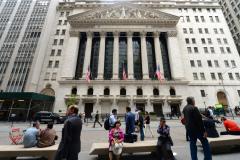 Related KEP Mid-Afternoon Market Update: Kroger Surges On Upbeat Results; Pier 1 Shares Slide Mid-Morning Market Update: Markets Mostly Flat; BlackBerry Results Beat Estimates
Related KEP Mid-Afternoon Market Update: Kroger Surges On Upbeat Results; Pier 1 Shares Slide Mid-Morning Market Update: Markets Mostly Flat; BlackBerry Results Beat Estimates  Reuters
Reuters 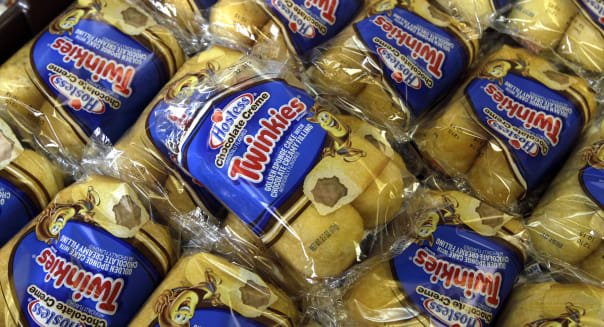 Associated Press/Brennan Linsley When Hostess Brands went bankrupt in 2012, it triggered anxiety among employees at Ottenberg's Bakery, a family-owned enterprise in Maryland. The companies shared a pension plan, and if Hostess couldn't pay its retirees, Ottenberg's would have to pick up the tab. Gary League, 53, who has delivered Ottenberg's bread for almost three decades, worried he might lose his nest egg, maybe even his job. "If you have all these guys out on retirement and you only have Ottenberg's paying into it, the math doesn't add up," he said. "I was thinking I would have to work forever." Last week, he got the good news -- the U.S. government saved his benefits by sacrificing those of Hostess' drivers, who will now get a reduced payout financed by the government. League is one of 10.4 million Americans with retirements tied to multiemployer pension plans, large investment pools long considered low risk because they don't rely on a single company for financing. Two recessions, industry consolidation prompted by deregulation and an aging workforce have funds facing a $400 billion shortfall that has some near insolvency. Dozens already have failed, affecting 94,000 participants. Things are dire enough that a coalition of employers and labor unions is asking Congress for permission to cut benefits to retired truck drivers, miners and others as a last resort in order to prevent plans from going under. The proposal has divided unions and their allies, triggering a lobbying battle as a legislative deadline approaches and retirement security looms large as a growing economic concern. $2 Billion LIability Leads to Plan Being Carved up Hostess, maker of Wonder Bread and Twinkies, was one of two employers contributing to the Bakery and Sales Drivers Local 33 Pension Fund. When Hostess went bankrupt, Ottenberg's was left to foot the bill. President Ray Ottenberg didn't respond to requests for comment. Hostess had about $2 billion in liability to its multiemployer plans. Because of the bankruptcy, those pensions will get nothing from the company, said David Rush, chief financial officer of the Hostess estate, known as Old HB. "You have to repay your secured creditors first," he said. "It was an unfortunate situation." The Obama administration acted last month, taking 342 Hostess truck drivers out of the plan to rescue benefits for League and about 360 others. It was the third time in its 40-year history that the Pension Benefit Guaranty Corp. had carved up a fund. The PBGC engineered a merger of Ottenberg pensions into another plan. Since 2005, the agency has paid about $722 million to people in similar failed plans. A coalition of 40 labor and employer groups, including Bechtel Group, United Parcel Service (UPS) and -- at the time -- the International Brotherhood of Teamsters last year said pension trustees should be allowed to cut benefits to current retirees. The once-unthinkable idea is now gaining support as funds falter and unemployment, student debt and longer life spans leave people less financially prepared for retirement. "It's the first attempt by an industry or a sector of the economy to really address what's going to come back and bite us as a country," said Randy DeFrehn, executive director of the National Coordinating Committee for Multiemployer Plans in Washington and an author of its "Solutions Not Bailouts" report. "If you allow some of these plans to have flexibility, they can take action instead of waiting until the assets are depleted." Slippery Slope for Plans, Federal Agency Others disagree. Giving pensions that option would make the problem worse, and not just for retirees, said Teresa Ghilarducci, an economist at the New School for Social Research in New York. Multiemployer payments are low and concentrated in economically distressed regions, including the industrial Midwest, she said. Once some pensions get the flexibility to cut benefits, others will want it, too, she said. It's a slippery slope that could lead to changes at single-employer pensions, which have 30.4 million participants. "It's bad for households, but it's also bad for the economy," Ghilarducci said. "In some of these communities, it's the retirees that are the mainstay." The PBGC, created in 1974, is on uneasy financial footing itself. The agency charges companies in multiemployer plans an annual insurance premium of $12 per plan participant, less than one-fourth of what other pension plans pay. The agency projects 173 multiemployer plans will exhaust assets, costing it an estimated $10 billion and leading to the insurance program's insolvency in 10 to 15 years. The agency is asking Congress for an increase in insurance premiums and more ability to intervene before funds are insolvent. Although the Hostess partition will cost the agency an estimated $22.5 million, it could ultimately save money because the entire pension plan likely would have failed without it, PBGC Director Joshua Gotbaum said. The agency partitioned its first pension in 1983 to save benefits for restaurant workers and manufacturers in and around Detroit. In 2010, it split a Chicago plan, protecting 3,700 truckers and putting 1,500 on government payouts. Now it's weighing carving up a second Hostess-related fund. "After we announced the Hostess partition we got calls from folks in other plans saying what about us?" Gotbaum said. "If we had a lot more money, we could do a lot more plans." Support for 'Solutions Not Bailouts' The nation's second-largest multiemployer fund, the Central States Southeast and Southwest Areas Health and Welfare Pension Funds, is also among the most troubled, with five retirees for every active employee. Covering 410,000 truck drivers, sanitation workers and others, the Teamsters plan paid out $2.1 billion more than it took in in 2012, with the average retiree receiving $15,000. In 2006, Congress passed the Pension Protection Act, giving funds such as Central States temporary leeway to cope with shortfalls. The law expires at the end of this year, and congressional lawmakers have no plans to renew it. Central States is one reason unions, including the Teamsters, lined up behind "Solutions Not Bailouts" last year. James P. Hoffa, then Teamsters president started hearing from his rank-and-file. He retreated in October, calling the proposal he helped craft a "mad rush to destroy what little semblance of retirement security exists in this country." "This issue is about basic economic fairness," Hoffa wrote in an Oct. 28 letter to House lawmakers. He called on labor unions to "ensure that the right to a dignified retirement remains sacrosanct." Hoffa spokesman Galen Munroe declined requests for comment. Cutting retirement income would be "a ticket to poverty," for some, said Bruce Olsson, a lobbyist with the International Association of Machinists, which has aligned with the Teamsters. "It puts the burden on people that are the most vulnerable. Retirees don't have the ability to make up that lost income." The last time Congress tried to rescue unfunded pensions, the move was attacked as a union bailout and failed, said former Representative Earl Pomeroy, a North Dakota Democrat who now advises the employer-labor coalition. Absent congressional action, more companies will abandon their obligations and leave retirees dependent on government aid, he said."You've got the hole getting bigger and bigger," Pomeroy said. "A haircut now beats a beheading later." Trustees at distressed funds can do only so much because the law dictates what benefits they can and can't cut. Had they been able to reduce accruals to retirees, they may have been able to save the Millwrights & Machinery Erectors Local Union No. 1545 Pension Fund. Stories of Two Men With Lower Benefits Peter Scarmozzi, a retired millwright living in Bear, Del., is among those willing to sacrifice. Scarmozzi, 66, is one of 179,000 participants in the millwrights' fund, about half of whom are retired. While the plan had suffered shortfalls before 2008, after the financial collapse, trustees calculated it would cost $23 per hour worked to restore it to health, up from less than $15. Some employers, including General Electric Co., want out and are now in court. "For 10 years we petitioned the trustees to cut the benefits back so the fund would survive," Scarmozzi said. "Now, it's going to fail." Kent Cprek, a lawyer for the Local 1545 fund, said trustees reduced what benefits the law allowed. Pension payments to existing retirees are off limits. "You're not allowed to cut every benefit," said Cprek, a shareholder at Jennings Sigmond in Philadelphia. Sacrificing part of Scarmozzi's pension a decade ago may have helped him and preserved benefits for younger millwrights today, including Thomas Hall, 55. Hall, who has installed turbines, generators and other large equipment for 33 years, began preparing for the worst in 2008. He and his wife cut spending and abandoned work on their unfinished house in North East, Md. Now the millwright fund could be insolvent as soon as next month, Scarmozzi said, and his $3,600 monthly pension will be replaced by an $800 check from the PBGC. "If I could find a part-time job, I'd take it," Scarmozzi said. "There's no golden years -- that stuff's gone." Hall said he will get $980 a month from the agency instead of his $4,000 pension. He's accrued another $226 so far from a separate fund he joined four years ago. "How healthy will that pension fund I'm contributing to now be in 10 years?" Hall said. "I'm stuck in a bad storm."
Associated Press/Brennan Linsley When Hostess Brands went bankrupt in 2012, it triggered anxiety among employees at Ottenberg's Bakery, a family-owned enterprise in Maryland. The companies shared a pension plan, and if Hostess couldn't pay its retirees, Ottenberg's would have to pick up the tab. Gary League, 53, who has delivered Ottenberg's bread for almost three decades, worried he might lose his nest egg, maybe even his job. "If you have all these guys out on retirement and you only have Ottenberg's paying into it, the math doesn't add up," he said. "I was thinking I would have to work forever." Last week, he got the good news -- the U.S. government saved his benefits by sacrificing those of Hostess' drivers, who will now get a reduced payout financed by the government. League is one of 10.4 million Americans with retirements tied to multiemployer pension plans, large investment pools long considered low risk because they don't rely on a single company for financing. Two recessions, industry consolidation prompted by deregulation and an aging workforce have funds facing a $400 billion shortfall that has some near insolvency. Dozens already have failed, affecting 94,000 participants. Things are dire enough that a coalition of employers and labor unions is asking Congress for permission to cut benefits to retired truck drivers, miners and others as a last resort in order to prevent plans from going under. The proposal has divided unions and their allies, triggering a lobbying battle as a legislative deadline approaches and retirement security looms large as a growing economic concern. $2 Billion LIability Leads to Plan Being Carved up Hostess, maker of Wonder Bread and Twinkies, was one of two employers contributing to the Bakery and Sales Drivers Local 33 Pension Fund. When Hostess went bankrupt, Ottenberg's was left to foot the bill. President Ray Ottenberg didn't respond to requests for comment. Hostess had about $2 billion in liability to its multiemployer plans. Because of the bankruptcy, those pensions will get nothing from the company, said David Rush, chief financial officer of the Hostess estate, known as Old HB. "You have to repay your secured creditors first," he said. "It was an unfortunate situation." The Obama administration acted last month, taking 342 Hostess truck drivers out of the plan to rescue benefits for League and about 360 others. It was the third time in its 40-year history that the Pension Benefit Guaranty Corp. had carved up a fund. The PBGC engineered a merger of Ottenberg pensions into another plan. Since 2005, the agency has paid about $722 million to people in similar failed plans. A coalition of 40 labor and employer groups, including Bechtel Group, United Parcel Service (UPS) and -- at the time -- the International Brotherhood of Teamsters last year said pension trustees should be allowed to cut benefits to current retirees. The once-unthinkable idea is now gaining support as funds falter and unemployment, student debt and longer life spans leave people less financially prepared for retirement. "It's the first attempt by an industry or a sector of the economy to really address what's going to come back and bite us as a country," said Randy DeFrehn, executive director of the National Coordinating Committee for Multiemployer Plans in Washington and an author of its "Solutions Not Bailouts" report. "If you allow some of these plans to have flexibility, they can take action instead of waiting until the assets are depleted." Slippery Slope for Plans, Federal Agency Others disagree. Giving pensions that option would make the problem worse, and not just for retirees, said Teresa Ghilarducci, an economist at the New School for Social Research in New York. Multiemployer payments are low and concentrated in economically distressed regions, including the industrial Midwest, she said. Once some pensions get the flexibility to cut benefits, others will want it, too, she said. It's a slippery slope that could lead to changes at single-employer pensions, which have 30.4 million participants. "It's bad for households, but it's also bad for the economy," Ghilarducci said. "In some of these communities, it's the retirees that are the mainstay." The PBGC, created in 1974, is on uneasy financial footing itself. The agency charges companies in multiemployer plans an annual insurance premium of $12 per plan participant, less than one-fourth of what other pension plans pay. The agency projects 173 multiemployer plans will exhaust assets, costing it an estimated $10 billion and leading to the insurance program's insolvency in 10 to 15 years. The agency is asking Congress for an increase in insurance premiums and more ability to intervene before funds are insolvent. Although the Hostess partition will cost the agency an estimated $22.5 million, it could ultimately save money because the entire pension plan likely would have failed without it, PBGC Director Joshua Gotbaum said. The agency partitioned its first pension in 1983 to save benefits for restaurant workers and manufacturers in and around Detroit. In 2010, it split a Chicago plan, protecting 3,700 truckers and putting 1,500 on government payouts. Now it's weighing carving up a second Hostess-related fund. "After we announced the Hostess partition we got calls from folks in other plans saying what about us?" Gotbaum said. "If we had a lot more money, we could do a lot more plans." Support for 'Solutions Not Bailouts' The nation's second-largest multiemployer fund, the Central States Southeast and Southwest Areas Health and Welfare Pension Funds, is also among the most troubled, with five retirees for every active employee. Covering 410,000 truck drivers, sanitation workers and others, the Teamsters plan paid out $2.1 billion more than it took in in 2012, with the average retiree receiving $15,000. In 2006, Congress passed the Pension Protection Act, giving funds such as Central States temporary leeway to cope with shortfalls. The law expires at the end of this year, and congressional lawmakers have no plans to renew it. Central States is one reason unions, including the Teamsters, lined up behind "Solutions Not Bailouts" last year. James P. Hoffa, then Teamsters president started hearing from his rank-and-file. He retreated in October, calling the proposal he helped craft a "mad rush to destroy what little semblance of retirement security exists in this country." "This issue is about basic economic fairness," Hoffa wrote in an Oct. 28 letter to House lawmakers. He called on labor unions to "ensure that the right to a dignified retirement remains sacrosanct." Hoffa spokesman Galen Munroe declined requests for comment. Cutting retirement income would be "a ticket to poverty," for some, said Bruce Olsson, a lobbyist with the International Association of Machinists, which has aligned with the Teamsters. "It puts the burden on people that are the most vulnerable. Retirees don't have the ability to make up that lost income." The last time Congress tried to rescue unfunded pensions, the move was attacked as a union bailout and failed, said former Representative Earl Pomeroy, a North Dakota Democrat who now advises the employer-labor coalition. Absent congressional action, more companies will abandon their obligations and leave retirees dependent on government aid, he said."You've got the hole getting bigger and bigger," Pomeroy said. "A haircut now beats a beheading later." Trustees at distressed funds can do only so much because the law dictates what benefits they can and can't cut. Had they been able to reduce accruals to retirees, they may have been able to save the Millwrights & Machinery Erectors Local Union No. 1545 Pension Fund. Stories of Two Men With Lower Benefits Peter Scarmozzi, a retired millwright living in Bear, Del., is among those willing to sacrifice. Scarmozzi, 66, is one of 179,000 participants in the millwrights' fund, about half of whom are retired. While the plan had suffered shortfalls before 2008, after the financial collapse, trustees calculated it would cost $23 per hour worked to restore it to health, up from less than $15. Some employers, including General Electric Co., want out and are now in court. "For 10 years we petitioned the trustees to cut the benefits back so the fund would survive," Scarmozzi said. "Now, it's going to fail." Kent Cprek, a lawyer for the Local 1545 fund, said trustees reduced what benefits the law allowed. Pension payments to existing retirees are off limits. "You're not allowed to cut every benefit," said Cprek, a shareholder at Jennings Sigmond in Philadelphia. Sacrificing part of Scarmozzi's pension a decade ago may have helped him and preserved benefits for younger millwrights today, including Thomas Hall, 55. Hall, who has installed turbines, generators and other large equipment for 33 years, began preparing for the worst in 2008. He and his wife cut spending and abandoned work on their unfinished house in North East, Md. Now the millwright fund could be insolvent as soon as next month, Scarmozzi said, and his $3,600 monthly pension will be replaced by an $800 check from the PBGC. "If I could find a part-time job, I'd take it," Scarmozzi said. "There's no golden years -- that stuff's gone." Hall said he will get $980 a month from the agency instead of his $4,000 pension. He's accrued another $226 so far from a separate fund he joined four years ago. "How healthy will that pension fund I'm contributing to now be in 10 years?" Hall said. "I'm stuck in a bad storm."